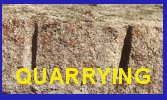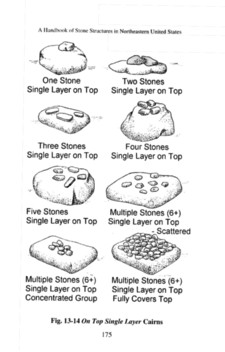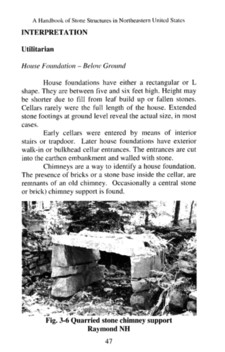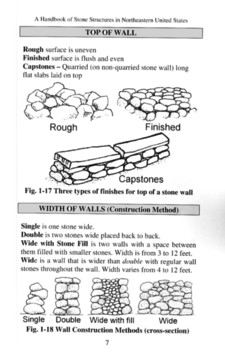|
FROM THE PUBLISHER
“In 1934 during the heart of the Great Depression, Roger Tory Peterson published his first field guide to birds. Peterson’s publisher was skeptical of the marketability of a “field guide” and printed a modest 2,000 copies. The first print run sold out in a mere two weeks and created the modern “field guide” phenomenon.
Following in these hallowed footsteps, the authors of A Handbook of Stone Structures in Northeastern United States have taken the “field guide” concept into the 21st century. Not only have they written and illustrated the first comprehensive field guide to the great diversity of stone structures found in northeastern United States, they have given the reader the means to identify, document, and analyze the stone structures they find in their own neighborhoods and local conservation lands.
The handbook covers both the well known agricultural farm stone structures like foundations, stone walls, wells, and root cellars as well as Native American ceremonial stone structures like chambers, cairns, standings stones, and pedestal boulders. It provides the means to distinguish between the two different types of structures.
The subject of Native American ceremonial stone structures is highly controversial. The conservative archaeological and academic communities in New England have staunchly maintained that the Native Americans never built these structures. The Native Americans have stated these structures were built by their ancestors to hold ceremonies and that these places continue to be sacred to their cultures.
The debate over the origins of many of these stone structures has largely defied explanation and analysis through traditional archaeological excavation methods due to the general absence of cultural artifacts. The Handbook offers a distinctly new approach using the basic principles of archaeology: It treats the stone structures themselves as the “cultural features” and “artifacts.” The methods of analyzing the spatial distribution and relationship between artifacts in a traditional excavation unit are perfectly applicable to the structures themselves.
Rather than taking sides in this controversy, the authors have sought a balanced scientific approach to the questions involved. They have taken the first steps towards defining some basic characteristics for distinguishing the two types of structures. They have offered a promising new methodology for researching these structures and in doing so have raised the scientific standards of evidence in this debate to the next level. By giving the reader the basic tools to identify and understand these archaeological sites, the book effectively serves to educate the public, foster respect and local stewardship of these sites, and ultimately encourages the preservation of these archaeological sites for future generations.”
|











